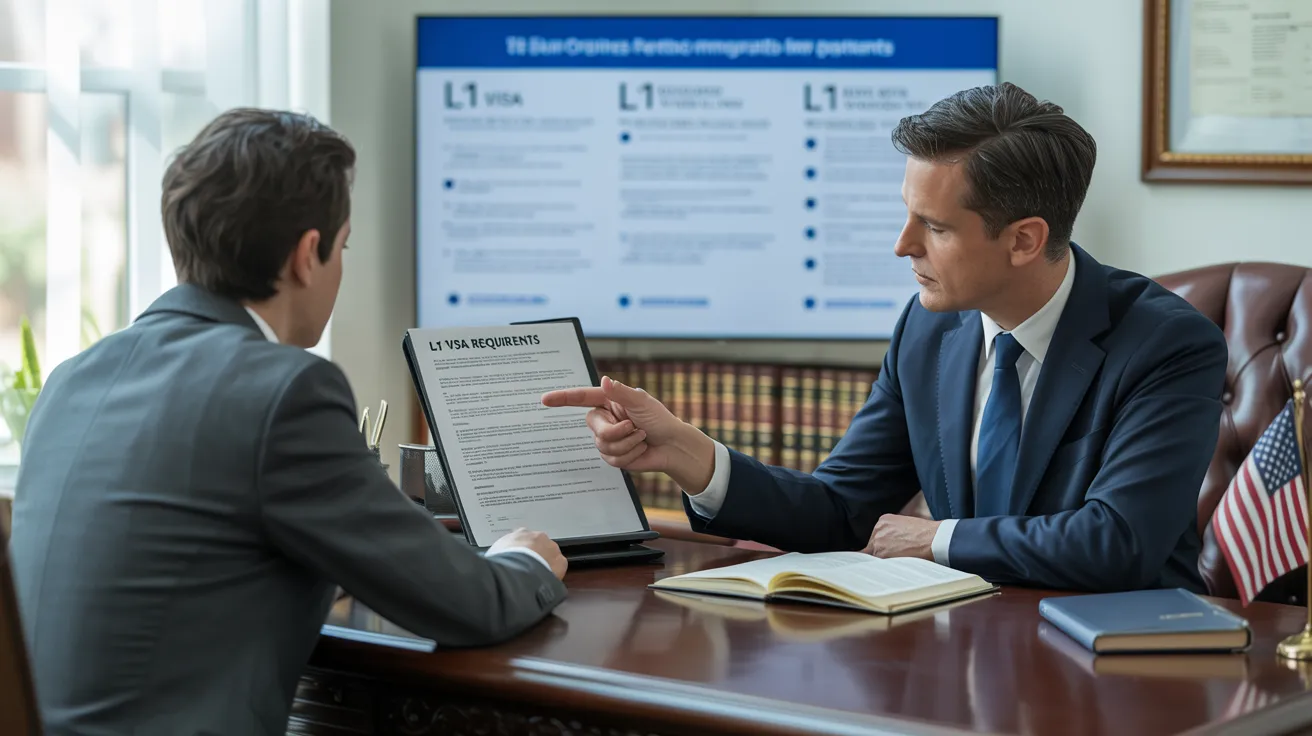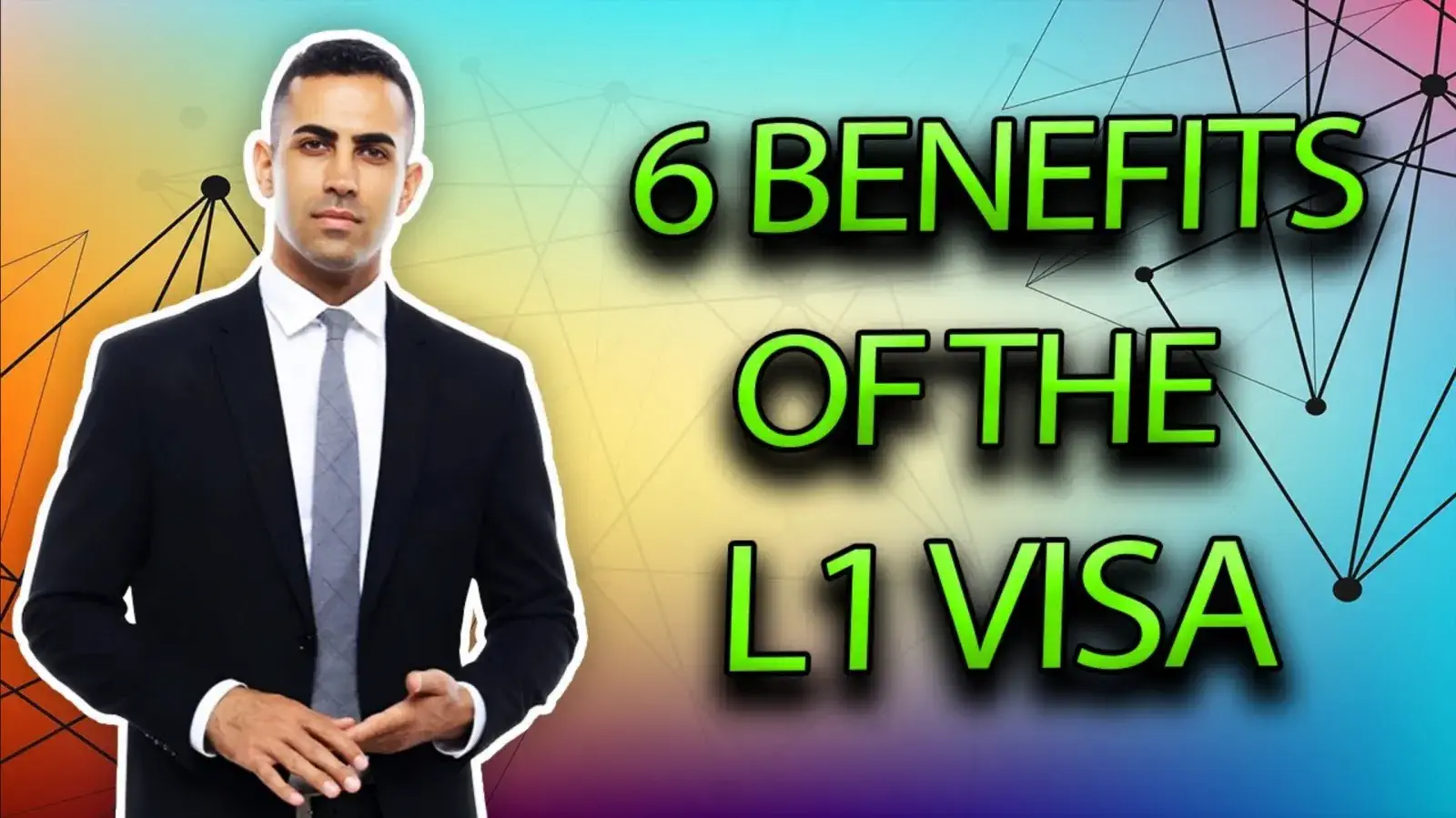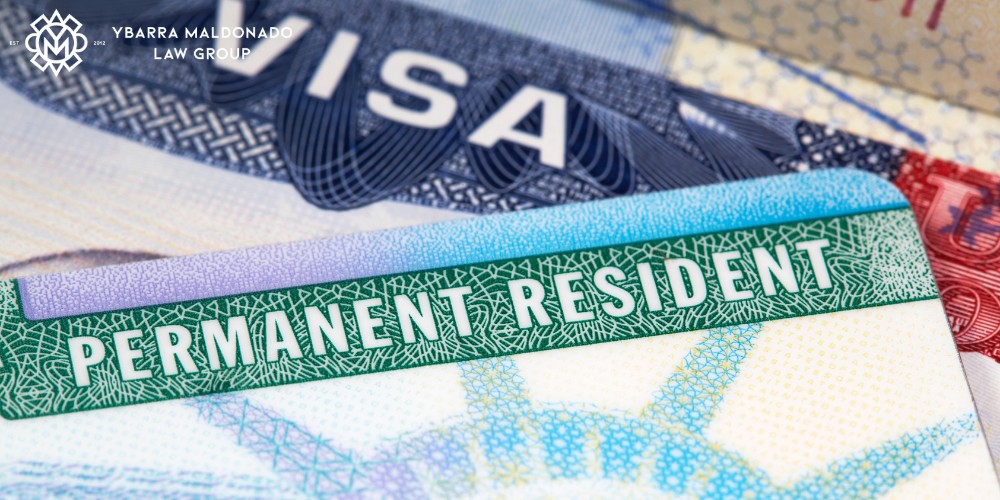Unlocking Opportunities: A Comprehensive Overview to the L1 Visa Process
The L1 visa process presents an essential path for international firms looking for to move key workers throughout borders. Understanding the subtleties of qualification requirements, the differences in between L-1A and L-1B visas, and the ins and outs of the application process can greatly impact an applicant's success. Steering this complicated landscape is not without its challenges, and cautious interest to documentation and company sponsorship is important. As we discover the key components of this process, the approaches for getting over possible challenges will certainly come to be noticeable, revealing how informed preparation can open up a world of opportunities.
Understanding the L1 Visa
Recognizing the L1 visa requires identifying its value as a crucial tool for international business looking for to transfer skilled staff members between worldwide workplaces. This non-immigrant visa category assists in the activity of executives, supervisors, and specialized knowledge workers to the United States, consequently enabling companies to preserve operational connection and harness international talent effectively. The L1 visa is separated into two primary categories: L-1A for managers and execs, and L-1B for workers possessing specialized knowledge.The L1 visa serves a crucial duty in boosting a firm's one-upmanship in the international industry. By enabling business to move their key workers, companies can ensure that important tasks are managed by qualified people that are currently aware of the firm's society and functional procedures. L1 Visa. This interior transfer mechanism not only promotes understanding sharing yet likewise promotes innovation and partnership across borders.Moreover, the L1 visa is usually favored for its fairly straightforward application procedure contrasted to various other visa categories, as it permits twin intent, allowing holders to go after permanent residency while on a short-term job visa. This attribute makes the L1 visa specifically appealing for both employers and staff members, as it enhances the pathway for competent specialists to establish long-lasting residency in the USA
Eligibility Standards
Qualification for the L1 visa hinges on numerous vital criteria that ensure both the employee and the employer meet certain qualifications. This non-immigrant visa is created for multinational firms to move staff members from foreign workplaces to U.S. counterparts.Firstly, the company has to be a qualifying organization, which includes a moms and dad firm, branch, associate, or subsidiary of an U.S. organization. The business has to have been doing company for a minimum of one year both in the united state and abroad. This assures that the firm has adequate functional stability and a legit presence.Secondly, the staff member has to hold a managerial, executive, or specialized knowledge placement. For L1A visas, the applicant needs to demonstrate managerial or executive credentials, while L1B visas concentrate on specialized expertise associated to the company's products, solutions, or procedures. Additionally, the employee has to have benefited the foreign entity for at least one continual year within the last three years before their application.Lastly, the worker's duty in the united state have to straighten with their previous placement, guaranteeing that their skills and expertise are leveraged for the company's benefit.

Kinds of L1 Visas
The L1 visa classification consists of 2 key kinds designed to help with the transfer of employees within international firms: the L1A visa for supervisors and execs, and the L1B visa for staff members with specialized understanding. Each kind serves distinctive functions and has specific qualification criteria.The L1A visa is customized for individuals that hold supervisory or executive positions within a firm. This visa makes it possible for top-level employees to move to an U.S. branch, subsidiary, or associate of the exact same organization. Candidates for the L1A visa must demonstrate that they have actually been employed in a managerial or executive ability for at the very least one continual year within the past three years before their application. Additionally, this visa supplies a much longer period of stay, originally approved for 3 years, with the possibility of extensions for as much as 7 years.In comparison, the L1B visa is planned for experts with specialized expertise pertaining to the firm's products, services, or procedures. To certify, applicants must verify that their proficiency is vital to the organization and that they have actually worked for at the very least one continuous year within the last 3 years in a role that required this specialized knowledge. The L1B visa is at first approved for 3 years, with extensions offered for as much as five years.Both visa kinds are essential for companies seeking to enhance their international procedures by leveraging skilled personnel, thereby promoting technology and efficiency within the united state market.
Application Process
Guiding via the L1 copyright procedure involves a number of crucial actions that must be carefully followed to assure an effective end result. The process begins with the U.S. employer, that need to first develop qualification by showing a certifying relationship with the foreign entity and validating that the employee meets the certain requirements for the L1 visa category being sought.Once qualification is verified, the employer starts the process by submitting Type I-129, the Petition for a Nonimmigrant Worker, with the U.S. Citizenship and Migration Solutions (USCIS) This form should be gone along with by an in-depth description of the job obligations to be performed, the business framework of both the U.S. and international entities, and the worker's qualifications. It's vital to verify that all info is accurate and total, as noninclusions or inaccuracies can bring about hold-ups or denials.Upon approval of the I-129 request, the next action includes the worker looking for the L1 visa at a united state embassy or consulate in their home country. This phase needs the completion of Type DS-160, the Online Nonimmigrant copyright, and arranging an interview. During the interview, the applicant should offer evidence supporting their qualifications and the employer's petition.After the visa is provided, the employee can enter the USA to operate in the designated role. On the whole, careful prep work and adherence per step of the application procedure are vital for an effective L1 visa outcome.
Required Documentation

Essential Types Required
Maneuvering the L1 Visa procedure requires mindful interest to the crucial kinds and paperwork required for an effective application. The primary type required is the Kind I-129, Application for a Nonimmigrant Worker, which need to be finished and sent by the U.S. employer (L1 Visa). This form details the information of the work offer and the certifications of the employee looking for the L1 Visa.Alongside Kind I-129, the candidate will certainly require to full Type I-539 if coming with family participants are additionally making an application for visas. Furthermore, the company needs to give evidence of the qualifying connection in between the united state entity and the foreign entity, usually requiring the entry of business documents such as posts of incorporation or economic statements.Moreover, it is necessary to include the L Classification Supplement to Form I-129, which defines the sort of L Visa being asked for-- either L-1A for supervisors and execs or L-1B for staff members with specialized understanding. Lastly, applicants ought to guarantee that all types are authorized and dated appropriately, as insufficient submissions can bring about delays or rejections. Properly constructing these essential types lays the foundation for a smoother L1 copyright procedure
Sustaining Evidence Needs
Sustaining documentation is important for a successful L1 copyright, as it corroborates the claims made in the petition. Applicants need to supply a series of files to demonstrate qualification for the visa, which is categorized right into two main types: evidence of the certifying relationship in between the U.S. and foreign entities and proof of the candidate's qualifications.To develop the partnership, candidates should submit documents such as corporate organizational graphes, monetary statements, and evidence of ownership. These records validate that the foreign company has a qualifying partnership with the united state company, whether as a parent company, subsidiary, branch, or affiliate.For the applicant's qualifications, vital documents include a comprehensive work letter from the foreign employer, describing the applicant's job title, responsibilities, and period of employment. Furthermore, educational credentials, such as degrees and diplomas, must be supplied to verify the applicant's competence in the pertinent area.
Employer Sponsorship Documents
Employer sponsorship records play a necessary function in the L1 copyright process, as they verify the U.S. employer's commitment to the candidate's work in the United States. These records are essential for showing the employer's eligibility to sponsor the applicant for the L1 Visa.Key papers usually needed consist of a thorough work letter from the U.S. company, which lays out the job title, duties, and the nature of the work connection. Additionally, the employer must supply proof of the company's authenticity, such as company licenses, tax returns, and business graphes, illustrating the partnership between the U.S. entity and the international company.Furthermore, evidence of the worker's certifying partnership with the foreign company is necessary. This may include documentation confirming the worker's role in the international entity, such as pay stubs, employment agreement, or performance evaluations.
Common Difficulties
Steering the L1 visa process provides numerous usual obstacles that applicants must recognize (L1 Visa). Key issues often consist of rigid documents demands, possible delays in processing times, and the need for rigorous legal compliance. Recognizing these obstacles can help applicants better prepare and mitigate threats during their copyright trip
Documentation Demands
The L1 copyright process usually offers considerable challenges associated with documents requirements. Candidates have to provide extensive paperwork to develop qualification, which can lead to complication and prospective delays. Trick papers include proof of a certifying partnership between the U.S. and foreign employer, evidence of the candidate's employment history, and comprehensive info about the job role in the U.S.One common obstacle is gathering adequate proof to demonstrate the nature of the qualifying connection. Business frequently struggle to present clear organizational charts or monetary statements that illustrate the connection between the entities. In enhancement, making sure that letters of assistance from companies accurately reflect the candidate's task tasks and qualifications is important, as unclear descriptions can lead to denials.Another concern occurs from the need for in-depth work descriptions that align with the L1 visa classifications. Candidates must express not only their existing duty however also their supervisory or specific understanding duties clearly. This demands a detailed understanding of both the candidate's placement and the governing language utilized in L1 applications.
Handling Time Delays
Experiencing hold-ups in processing times is an usual challenge encountered by L1 visa candidates, usually causing aggravation and unpredictability. Numerous factors add to these delays, including high application volumes, boosted scrutiny of applications, and administrative stockpiles within the united state Citizenship and Immigration Provider (USCIS) Candidates might locate that handling times can differ significantly relying on the service facility handling their application, as each facility has its own workload and performance levels. Additionally, the intricacy of the candidate's situation, such as the demand for considerable paperwork or information, can additionally prolong wait times.In some circumstances, issues connected to the candidate's current immigration standing or previous visa background might also result in extra hold-ups, as USCIS may need more evaluation or details. It is important for prospects to continue to be proactive during this period, preserving open interaction with their employers and lawful reps to address any possible concerns promptly.Understanding these processing time challenges can help L1 visa candidates get ready for feasible delays and minimize the influence on their change and occupation plans. Patience and persistance are important merits in navigating this intricate procedure.
Lawful Conformity Issues
Lots of L1 visa candidates encounter legal conformity concerns that can complicate their journey toward obtaining the visa. Recognizing and adhering to the particular policies established by the united state Citizenship and Migration Provider (USCIS) is crucial. Common difficulties consist of showing the certifying relationship in between the foreign and U.S. employers, along with showing that the applicant possesses the requisite specific understanding or supervisory capacity.Additionally, candidates must offer detailed documentation outlining their work obligations, company structure, and financial viability of the united state entity. Insufficient or imprecise documentation can bring about hold-ups or perhaps rejections. Employers should also ensure that they adhere to labor legislations, consisting of wage and working problem standards, which can influence visa eligibility.Another typical concern involves maintaining conformity with the regards to the visa as soon as granted. Changes in employment condition, job duties, or firm framework can necessitate changes to the visa, which otherwise dealt with quickly can cause legal difficulties. Because of this, staying informed concerning conformity needs and seeking legal advise when required is important to navigate the complexities of the L1 visa procedure efficiently.
Tips for Success
Success in the L1 copyright process frequently depends upon precise prep work and attention to information. To enhance your chances of approval, start by extensively recognizing the eligibility needs for both the L1A and L1B visa groups. Evaluate whether your setting at the firm certifies as managerial, exec, or specialized expertise, as this categorization especially influences your application.Next, gather comprehensive documentation that validates your claims. This includes business graphes, detailed task summaries, and proof of the business's functional structure. Clear and succinct evidence of the qualifying relationship between the U.S. entity and the foreign entity is crucial. Verify that all documents are organized rationally and presented in an expert manner, as this shows your dedication and severity about the application.Engage the services of a skilled migration attorney who concentrates on L1 visas. Their knowledge can show indispensable, guiding you with complex regulations and assuring that all paperwork follows current legislations. Furthermore, plan for the meeting by exercising response to common concerns and preparing to discuss your duty and payments to the firm detailed.
Regularly Asked Inquiries
Can Family Members Accompany the L1 Visa Holder?
Yes, member of the family of L1 visa owners, including partners and unmarried children under 21, can accompany the primary visa owner. They may also request L2 visas, which allow them to reside in the USA.
The Length Of Time Can I Keep on an L1 Visa?
The L1 visa enables preliminary stays of as much as three years, with the opportunity of expansion. L1A visa owners might remain for an optimum of seven years, while L1B visa holders can remain for L1 Visa five years.
Can L1 Visa Holders Request a copyright?
Yes, L1 visa owners can apply for a copyright. They might seek permanent residency through employment-based categories, typically requiring sponsorship from their company, supplied they meet the required credentials and documentation needs.
What Happens if My L1 copyright Is Refuted?
If your L1 copyright is refuted, you may obtain a notification describing the reasons for denial. You can look for to appeal the decision, reapply, or discover alternative visa options based on your conditions.
Are There Any Type Of Traveling Limitations With an L1 Visa?
An L1 visa typically allows for international traveling; nevertheless, re-entry to the united state rests upon maintaining valid status. Tourists ought to ensure compliance with visa problems to avoid problems upon return
Verdict
